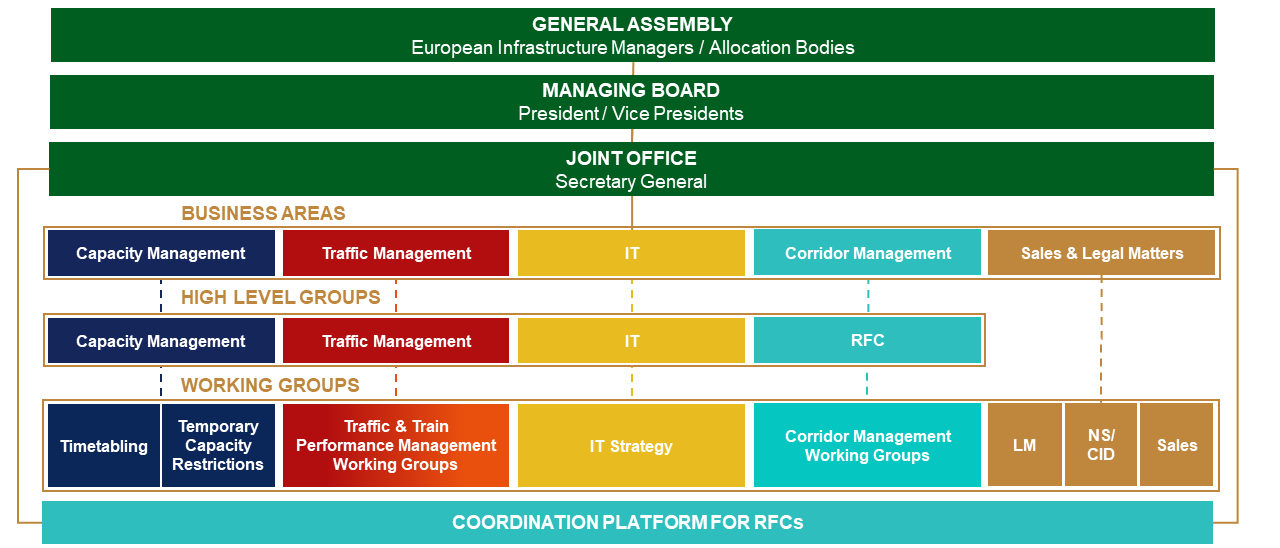Approach
RailNetEurope (RNE) was set up in 2004 to help meet the challenges faced by the international rail sector. RNE facilitates the operational international business of its Members by providing solutions that benefit all RNE Members as well as their customers and business partners. RNE’s role is also to provide support as regards compliance with the European legal framework. This entails developing harmonised international business processes, templates, handbooks, and guidelines. In short, RNE’s mission is to help its Members meet the challenges of the rapidly-changing railway sector in Europe and to promote international rail traffic.
As an umbrella organisation, most of RNE’s work takes place through standing Working Groups and Project Teams, which are divided into the following business areas:
- CAPACITY MANAGEMENT
- TRAFFIC MANAGEMENT
- CORRIDOR MANAGEMENT
- IT
- LEGAL MATTERS & SALES
(incl. NETWORK STATEMENT & CORRIDOR INFORMATION DOCUMENTS)
RNE liaises with other European/international bodies – such as the CER, CIT, EIM, ERFA, FTE, IRG-Rail, ALLRAIL and RFF as well as UIC and UIRR – to build consensus on issues of common interest. In particular, we collaborate closely with the European Railway Agency (ERA) in the field of TAF and TAP TSIs.
Over the years, the European Commission has come to value our activities and to take a keen interest in our efforts, and we benefit from European Union funding. The CINEA (European Climate Infrastructure and Environment Executive Agency) has provided much-needed funding, for which we are very grateful. In addition, RNE is participating as an Observer within the PRIME Platform, where the dialogue between the European Commission and the Infrastructure Managers is being enhanced. In this context it can be mentioned that RNE, together with the European Commission (DG MOVE), co-chairs the PRIME Digital Subgroup.

RNE Structure
RailNetEurope has adopted the typical structure of an international organisation. At least twice a year, the RNE General Assembly makes decisions. These are prepared by a Managing Board that meets about five times a year, and also supervises the work of all RNE ad hoc and standing groups. The day-to-day work of these groups is coordinated and managed at the RNE Joint Office in Vienna, which is also in charge of the administration, finances and communication of the Association.
In 2014, it was decided to set up High Level Groups (HLGs) in the following areas: Rail Freight Corridors, IT, Capacity Management, and Traffic Management. The High Level Groups have been tasked with providing input into RNE strategy, proposing projects and stimulating the implementation of project results as a first escalation level.
